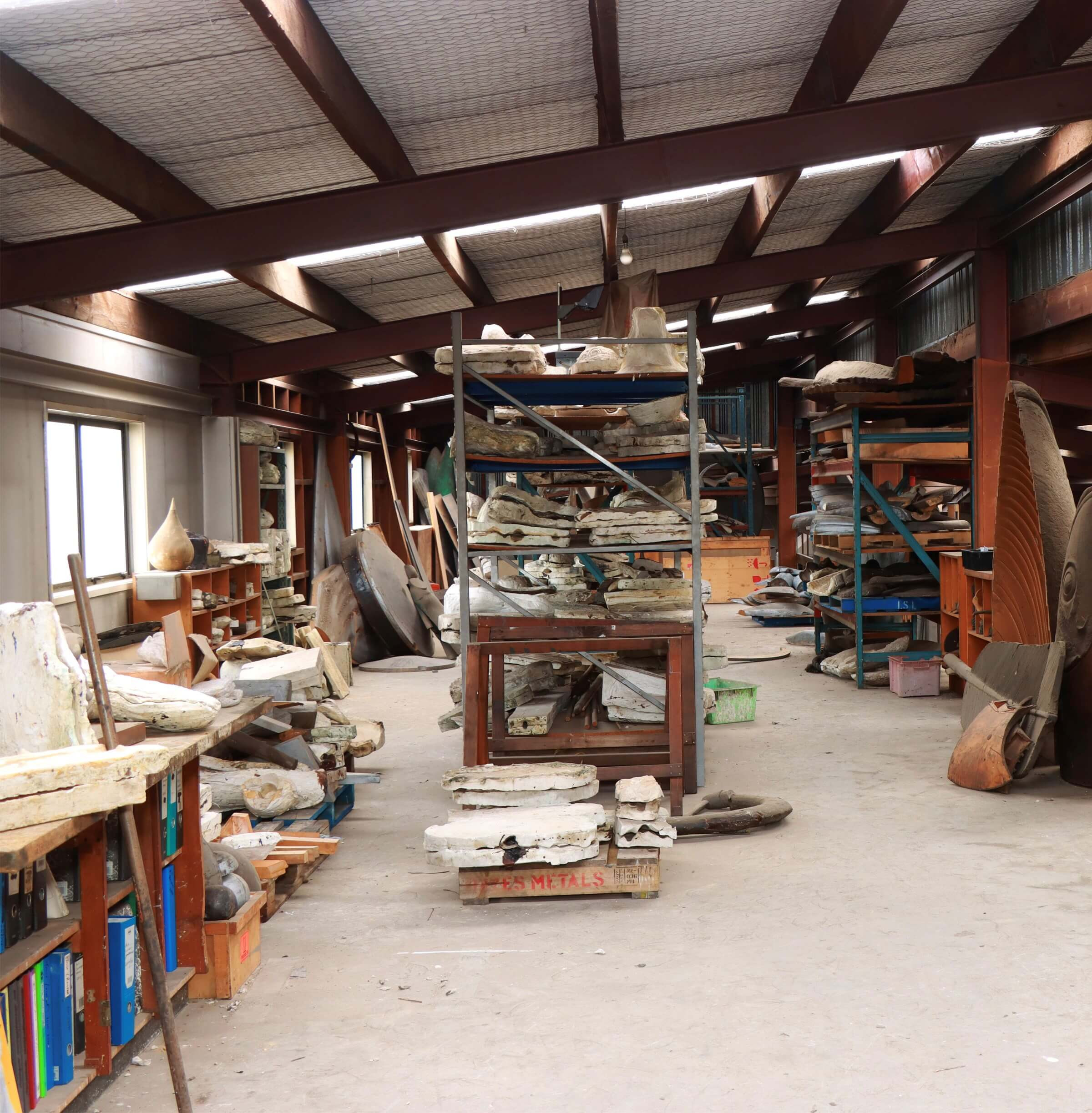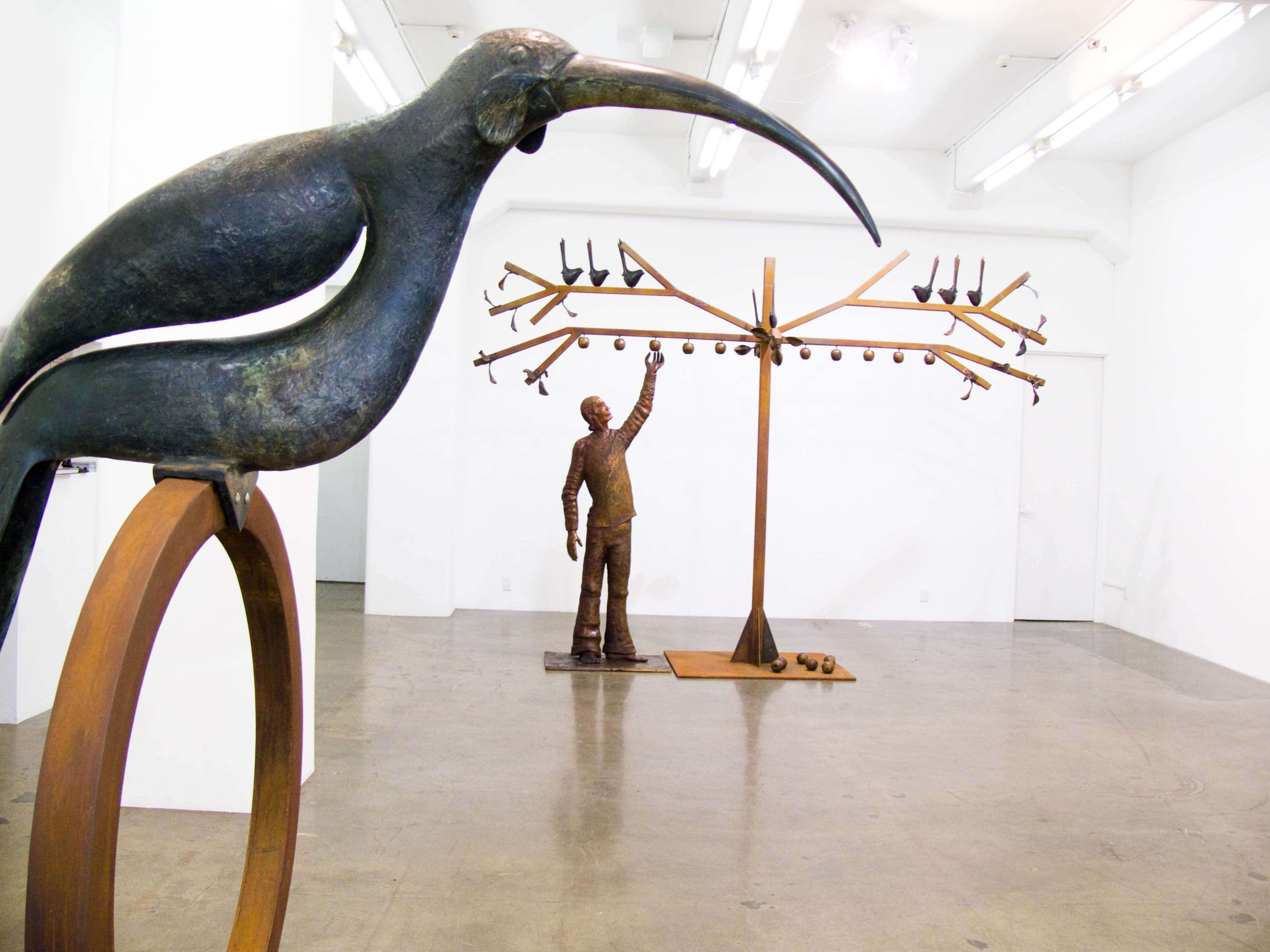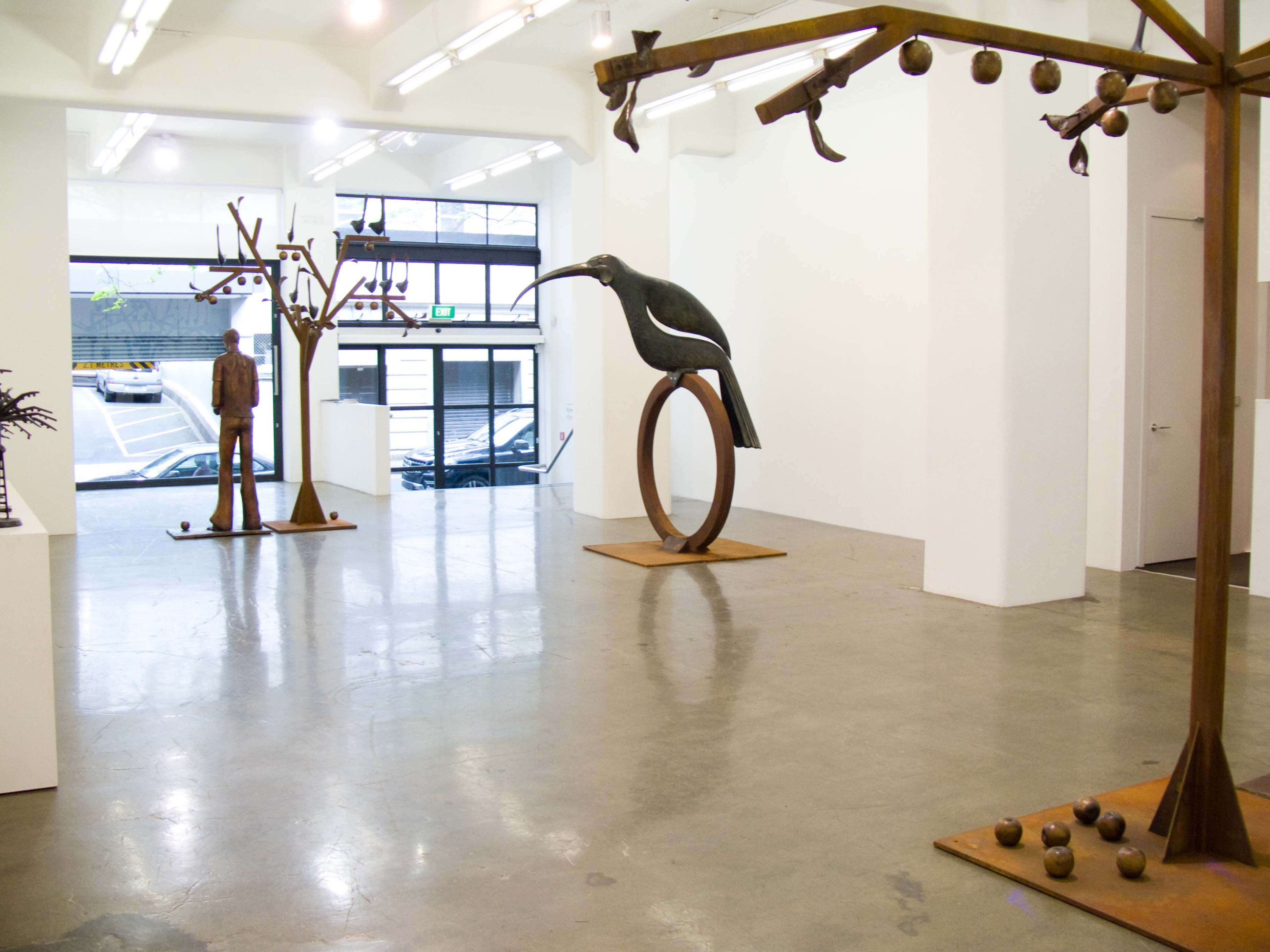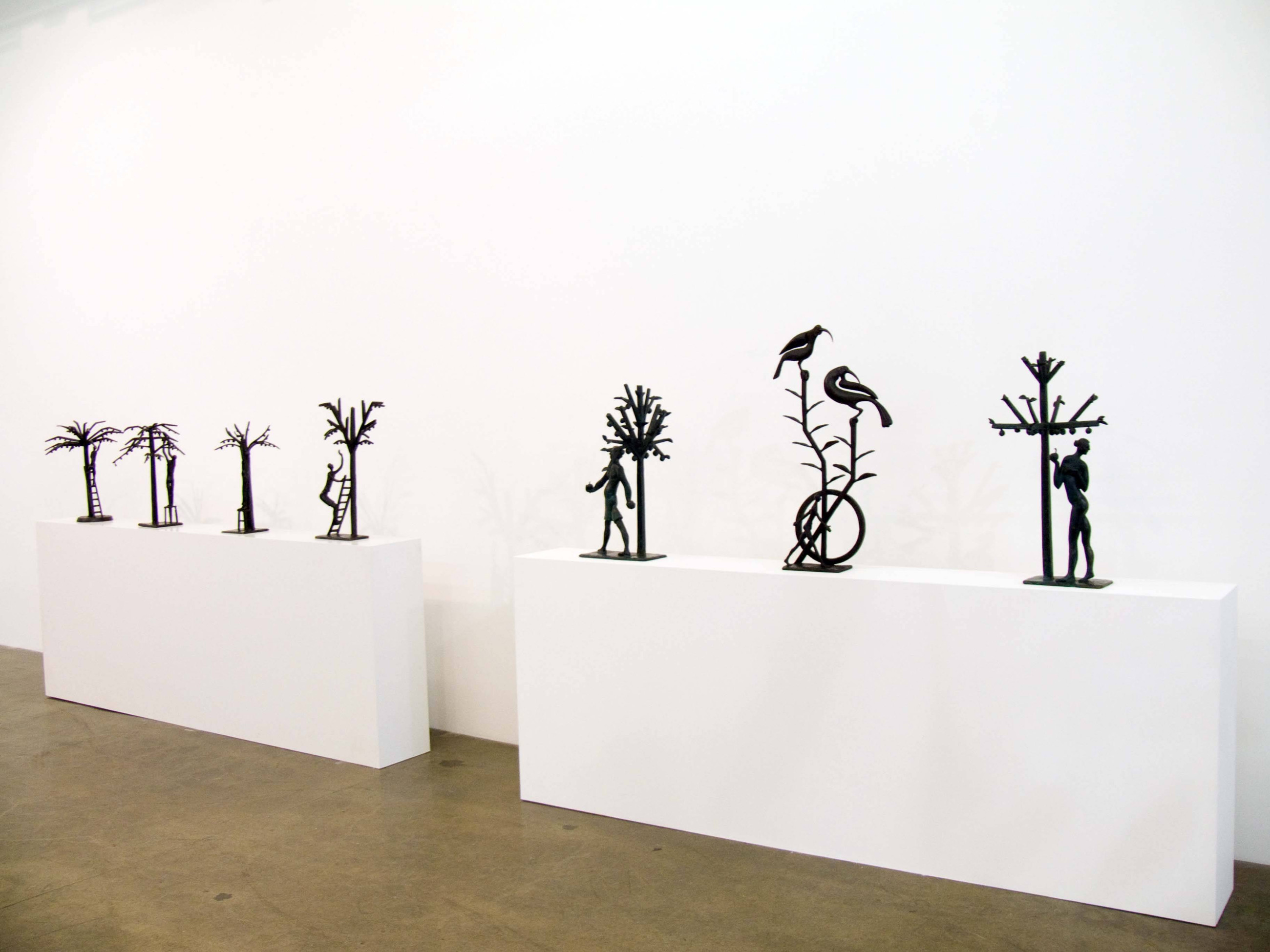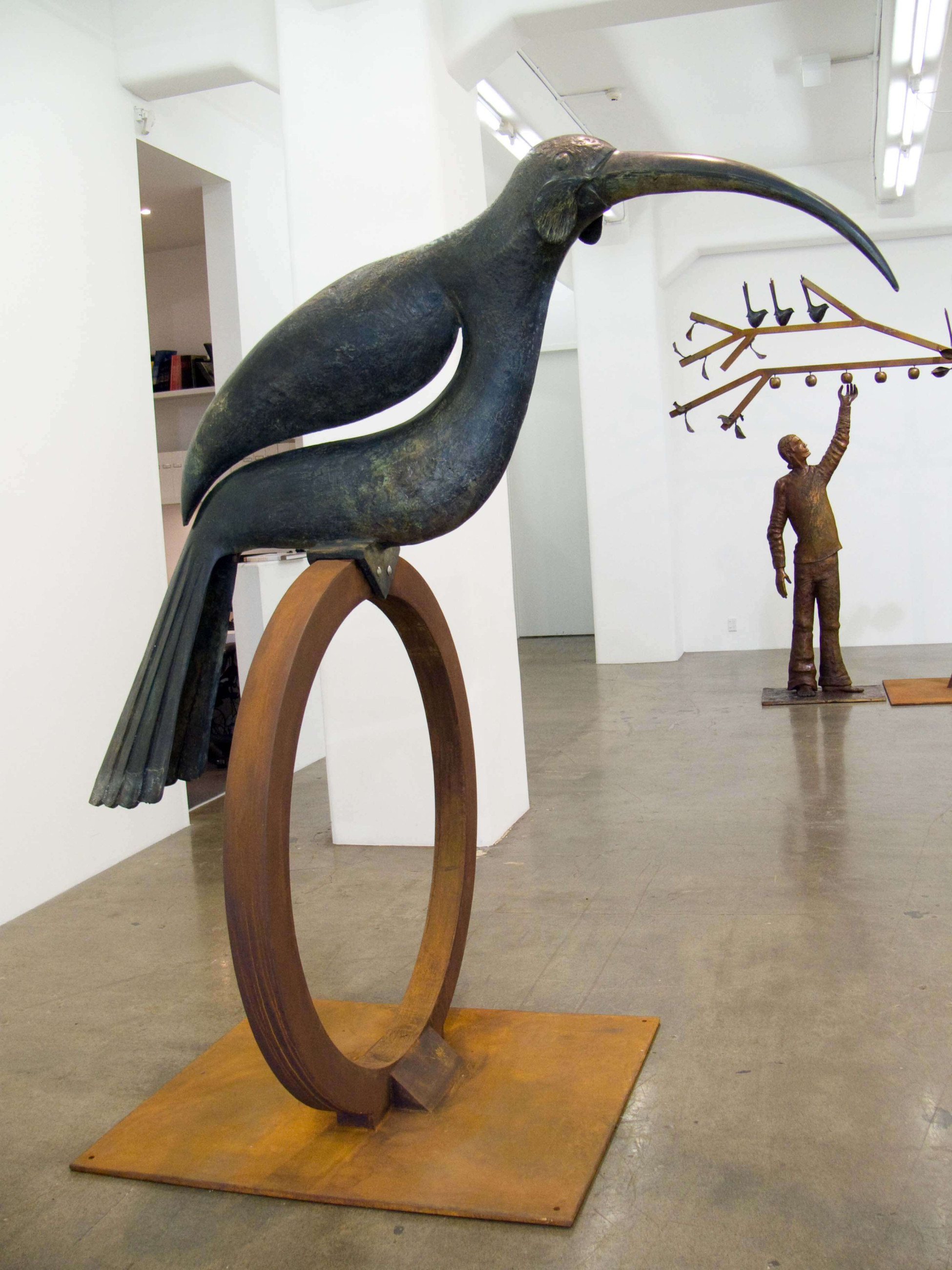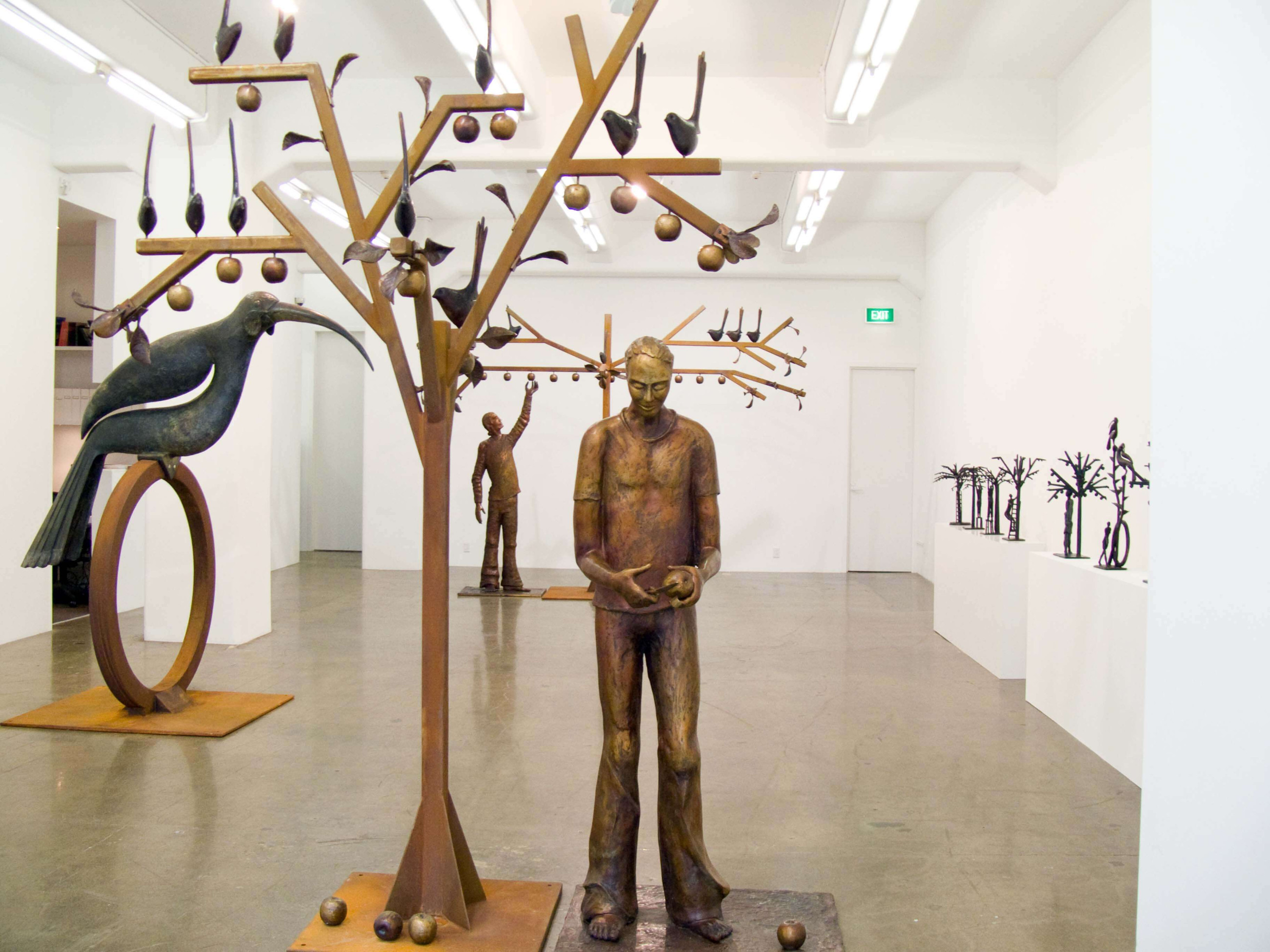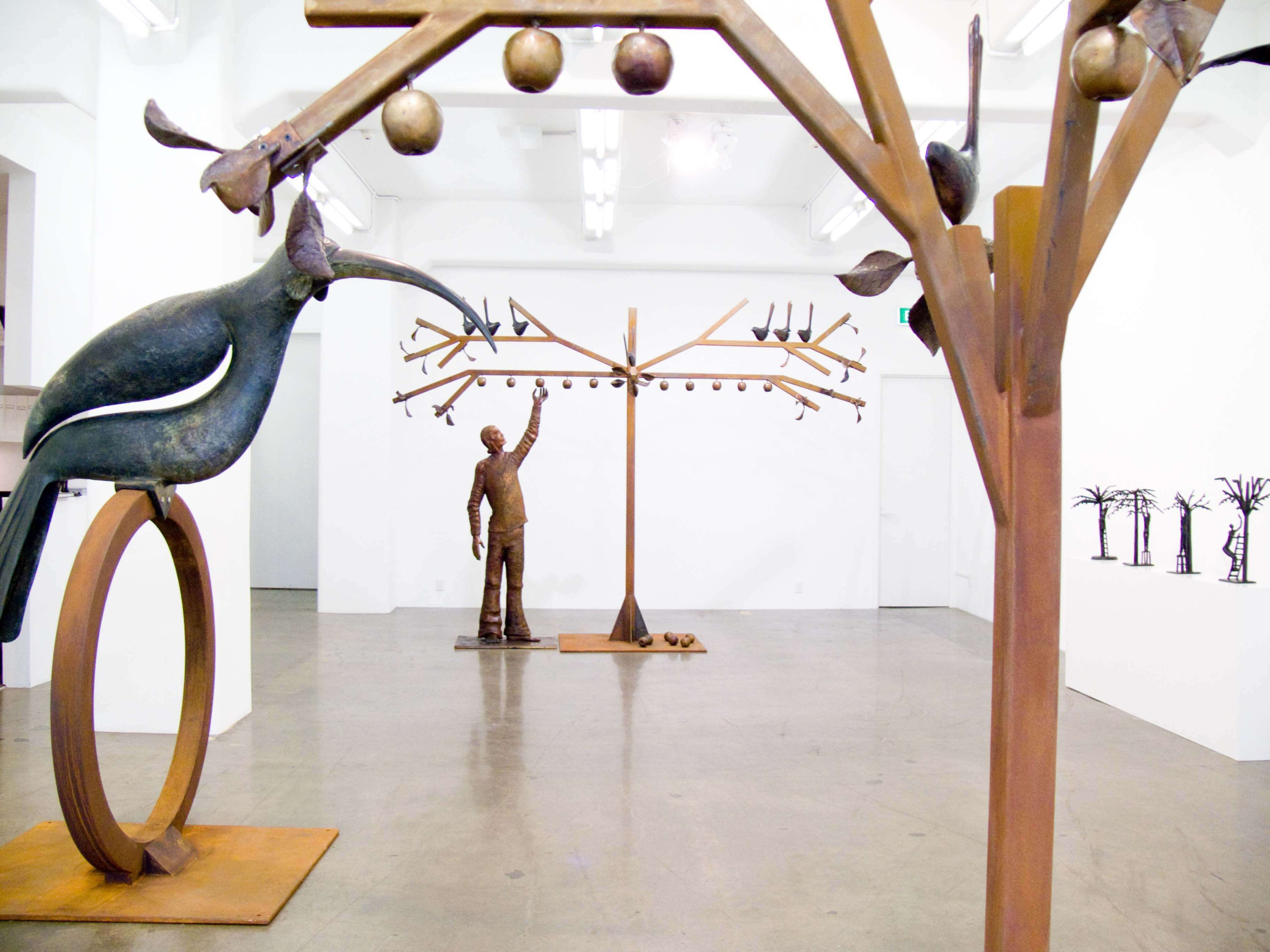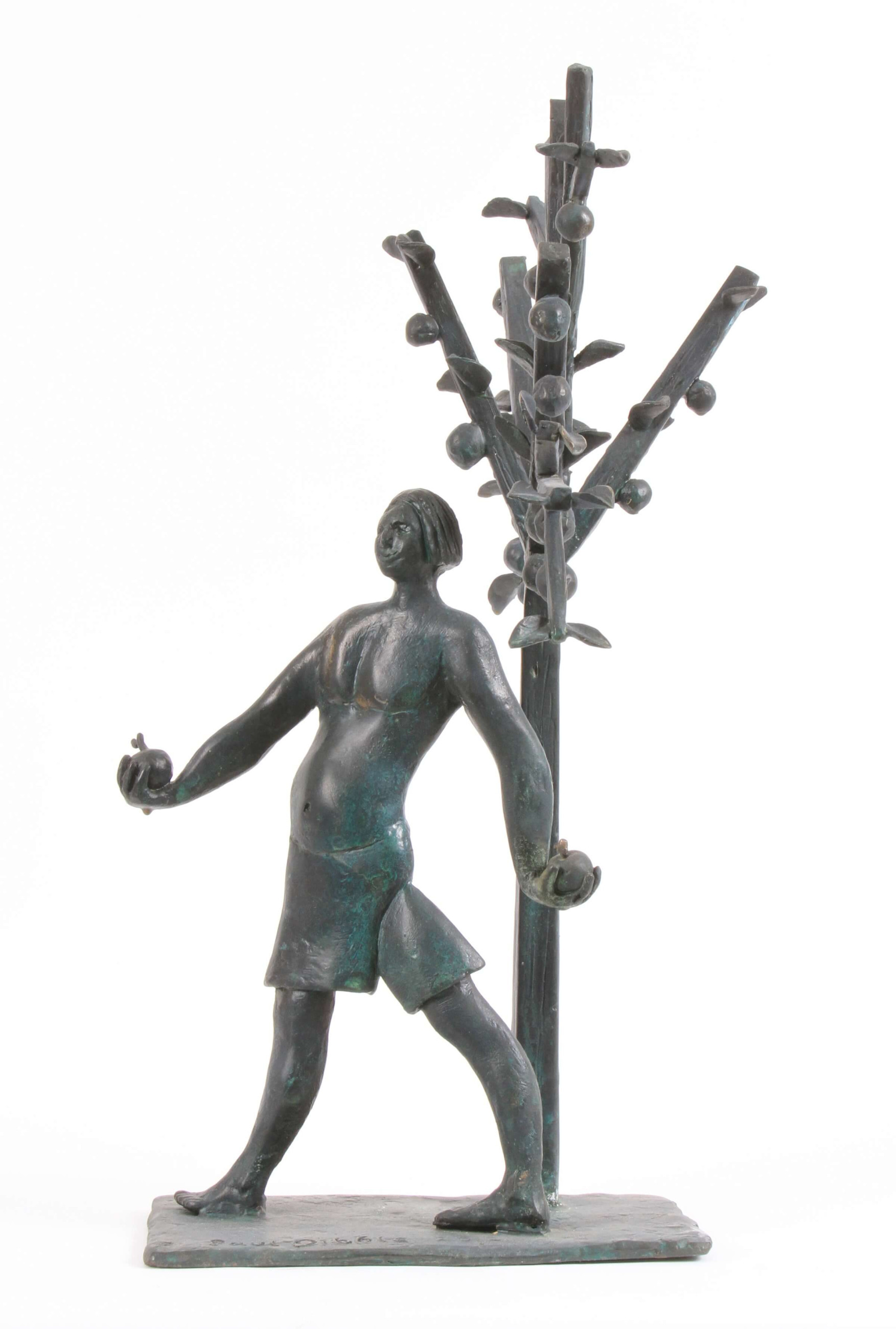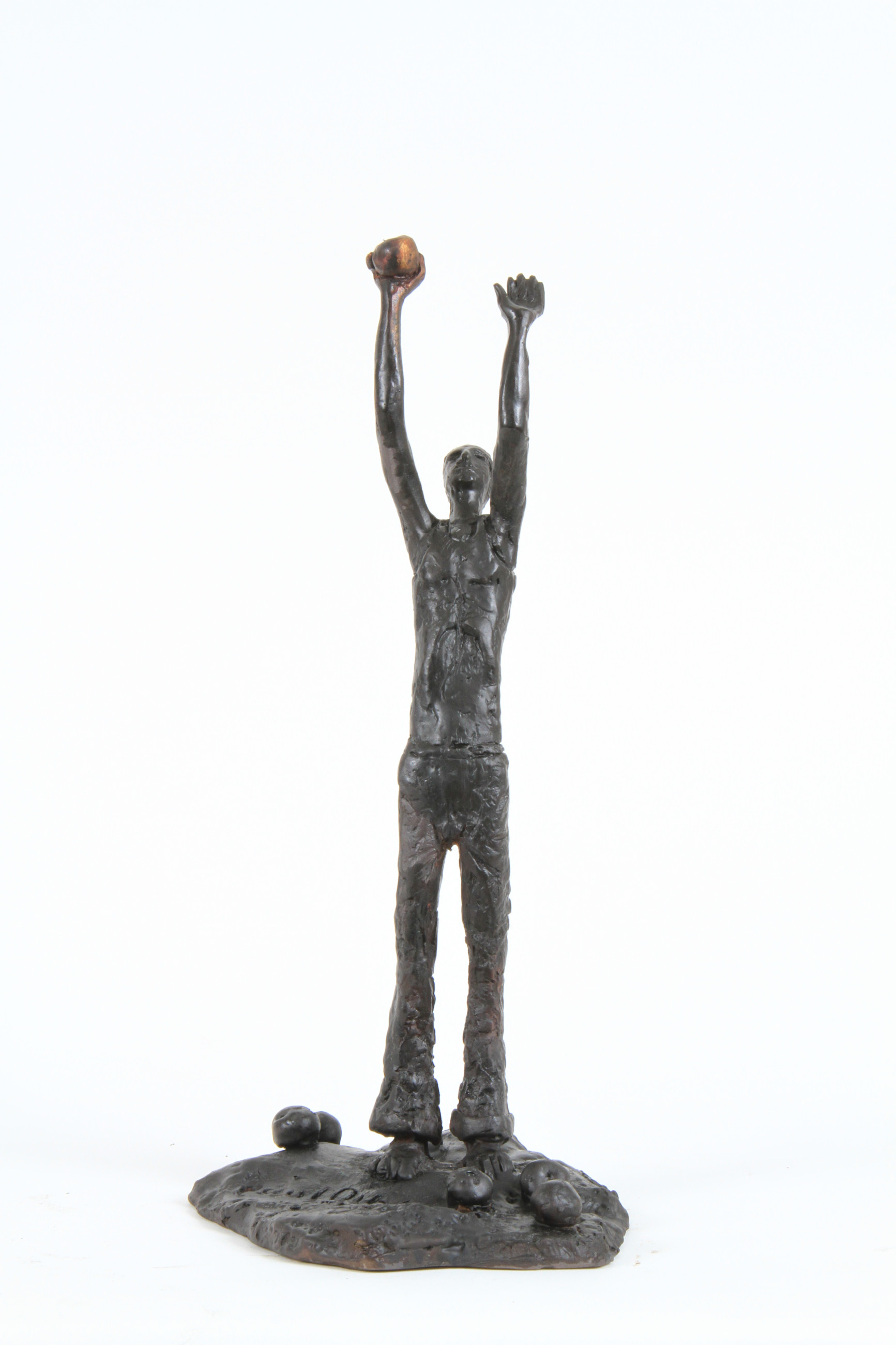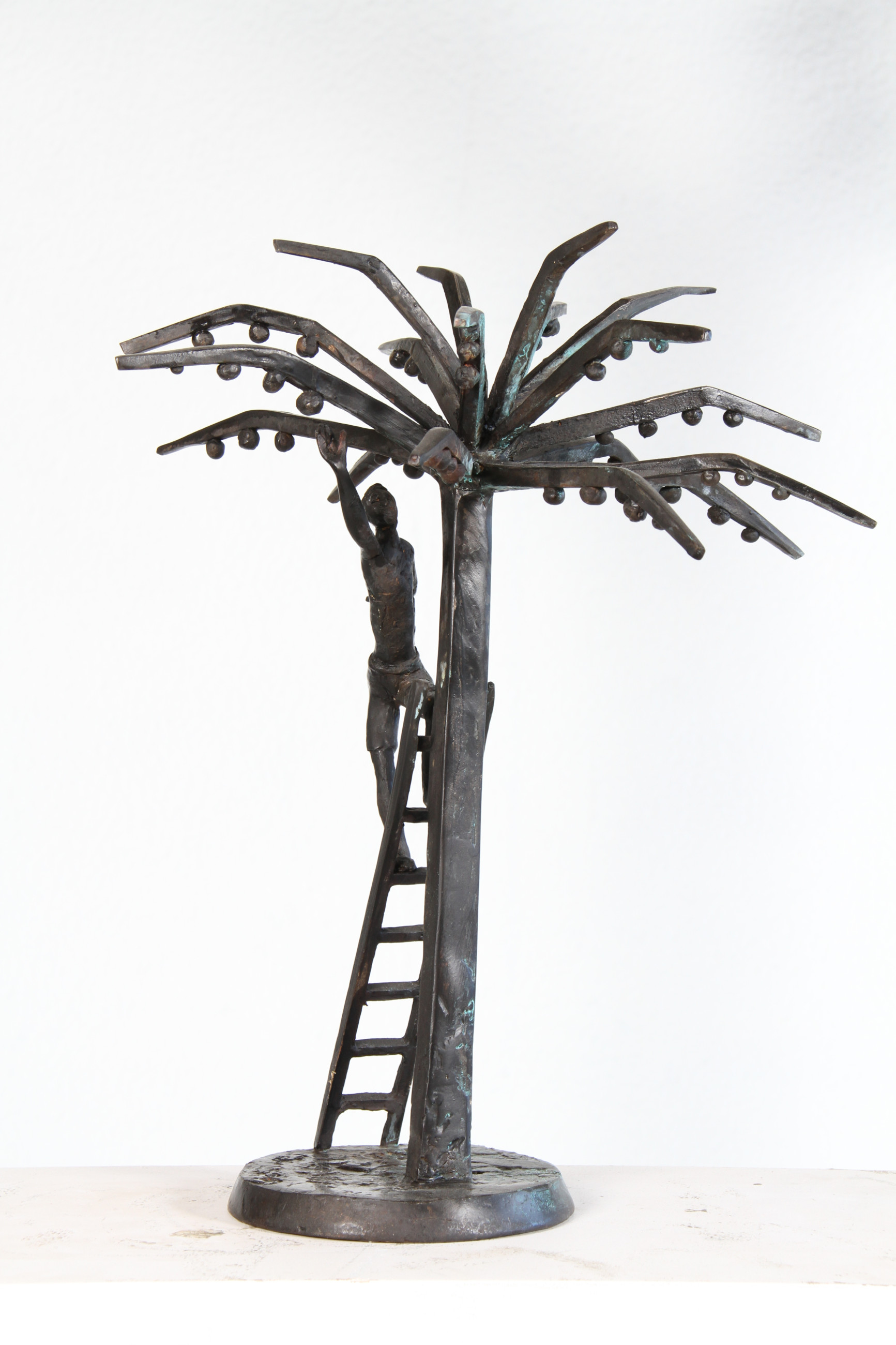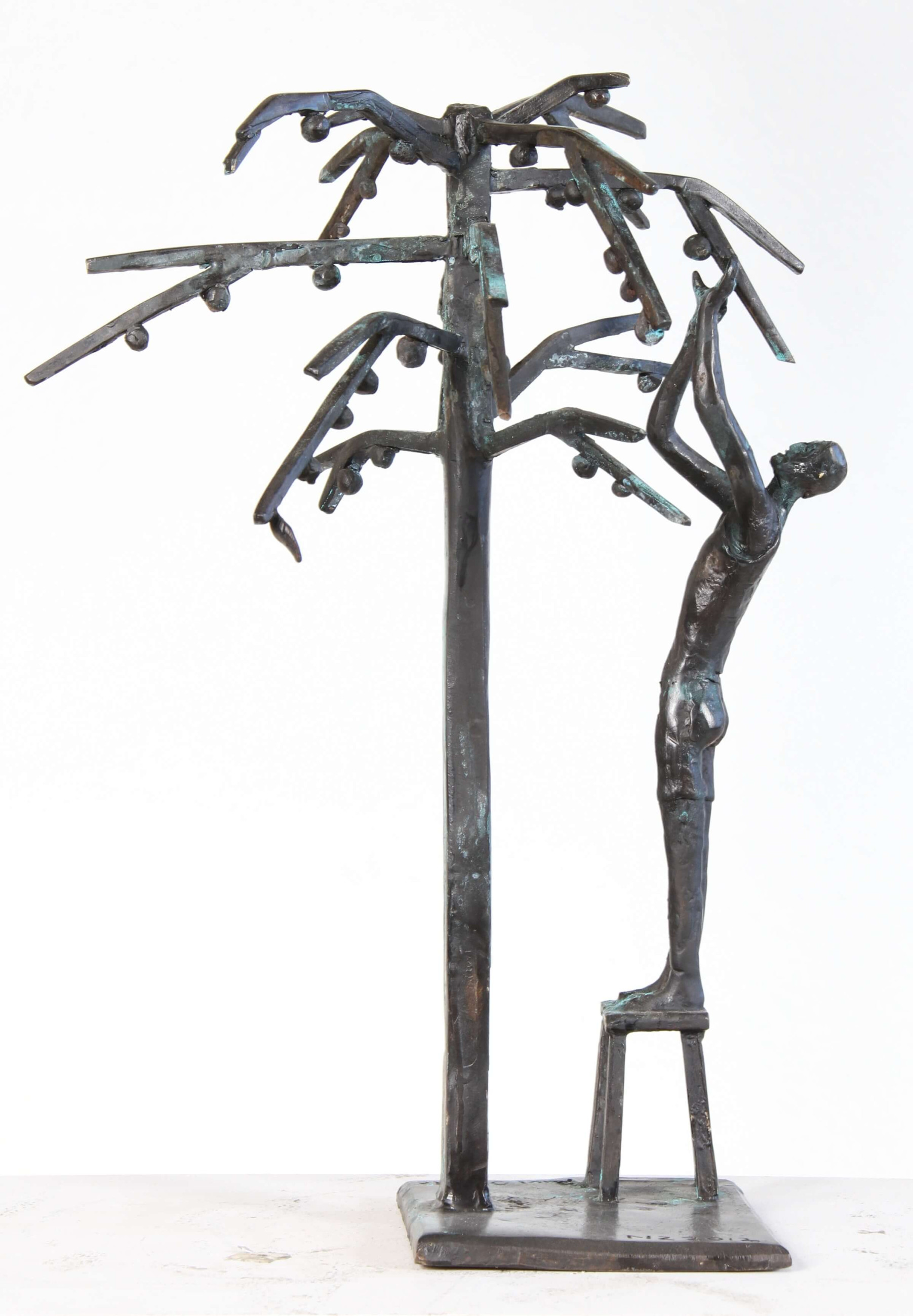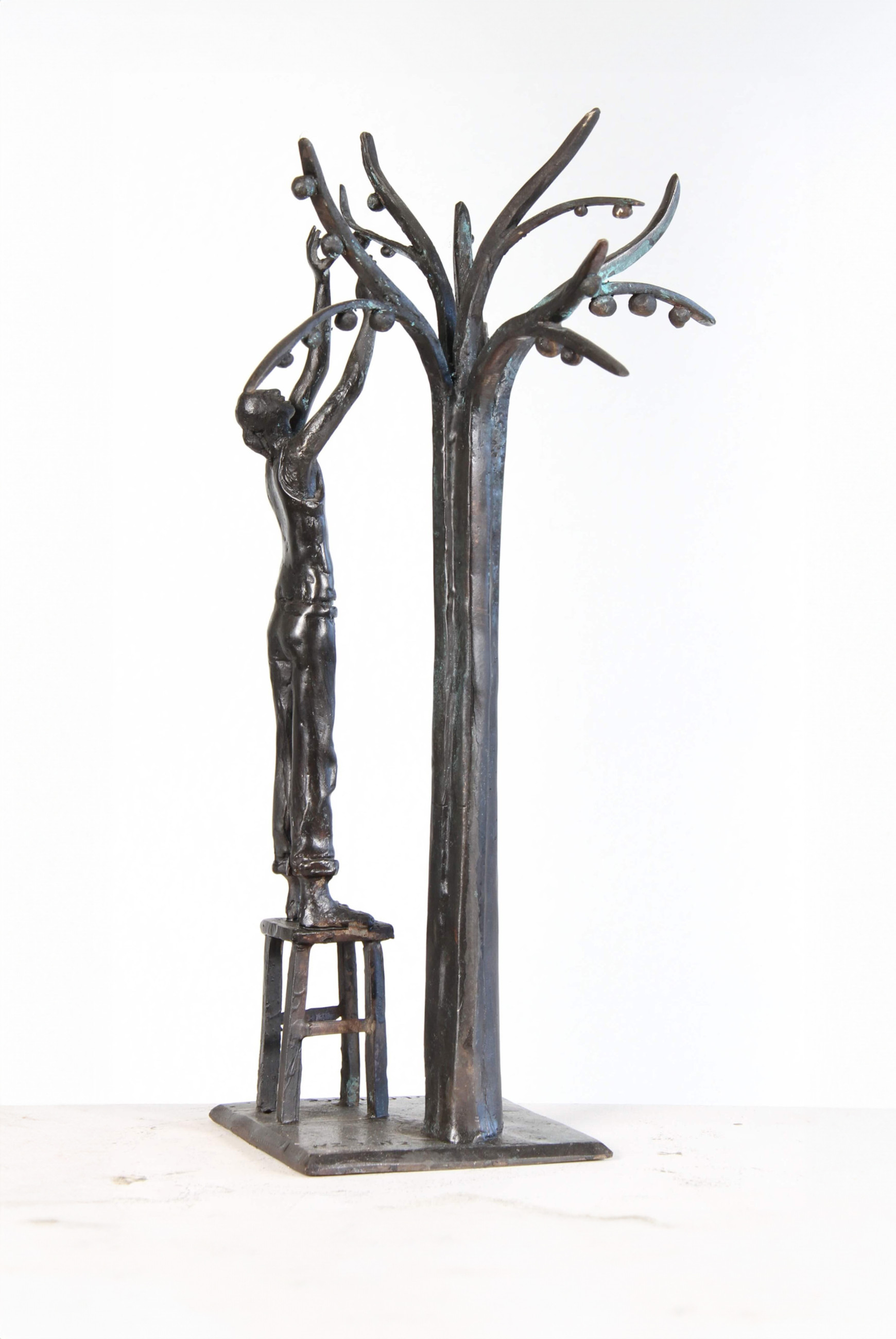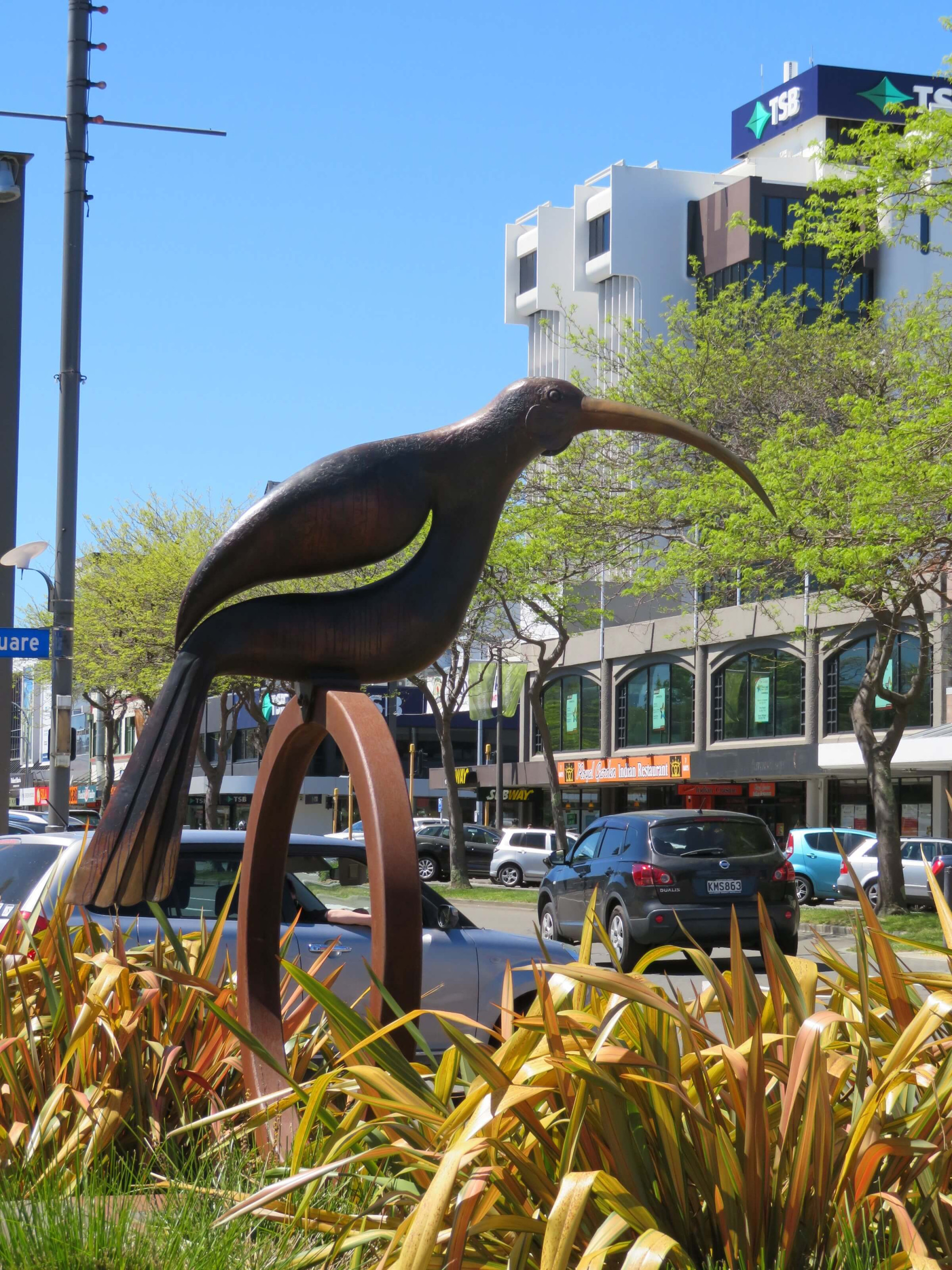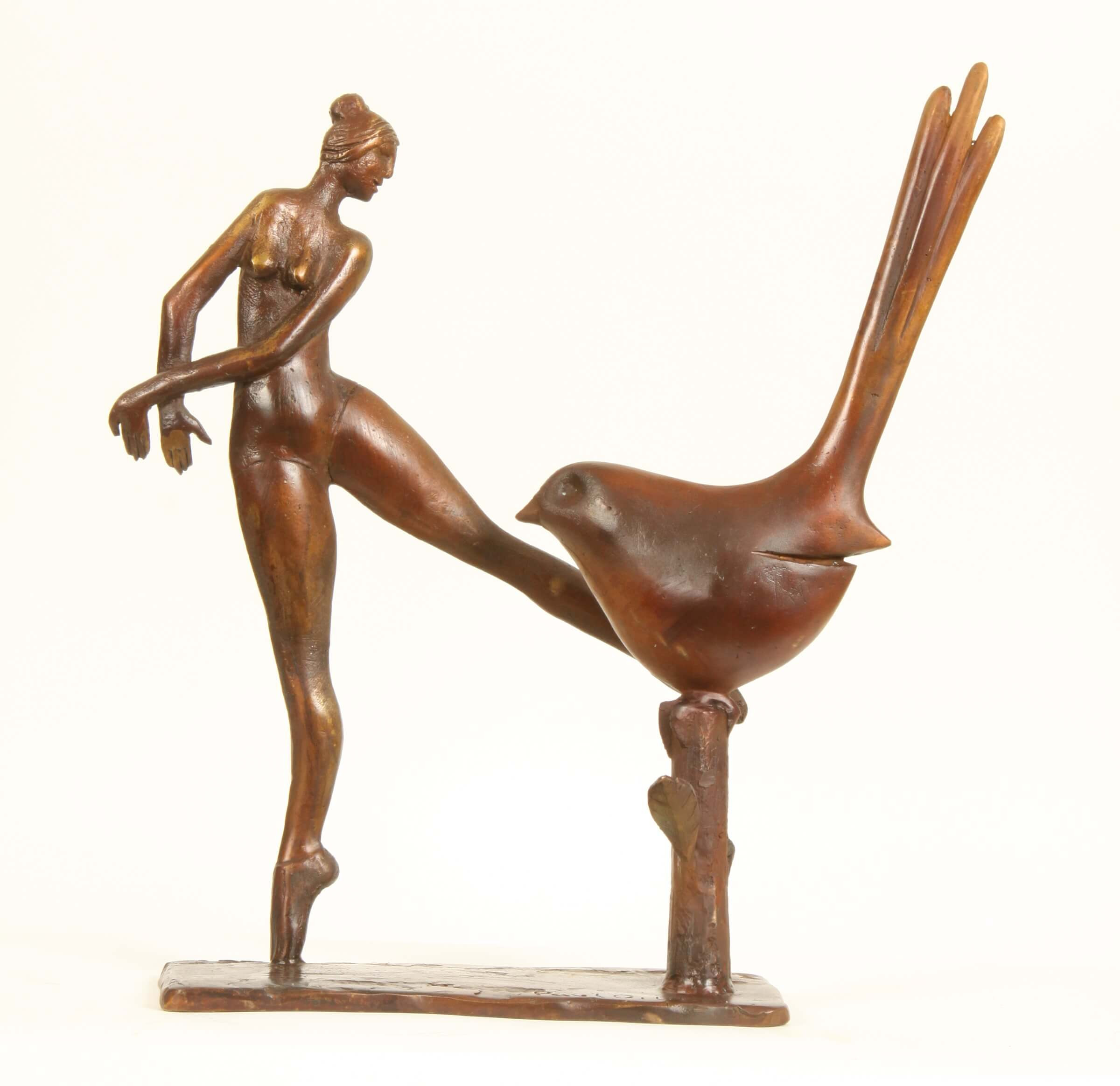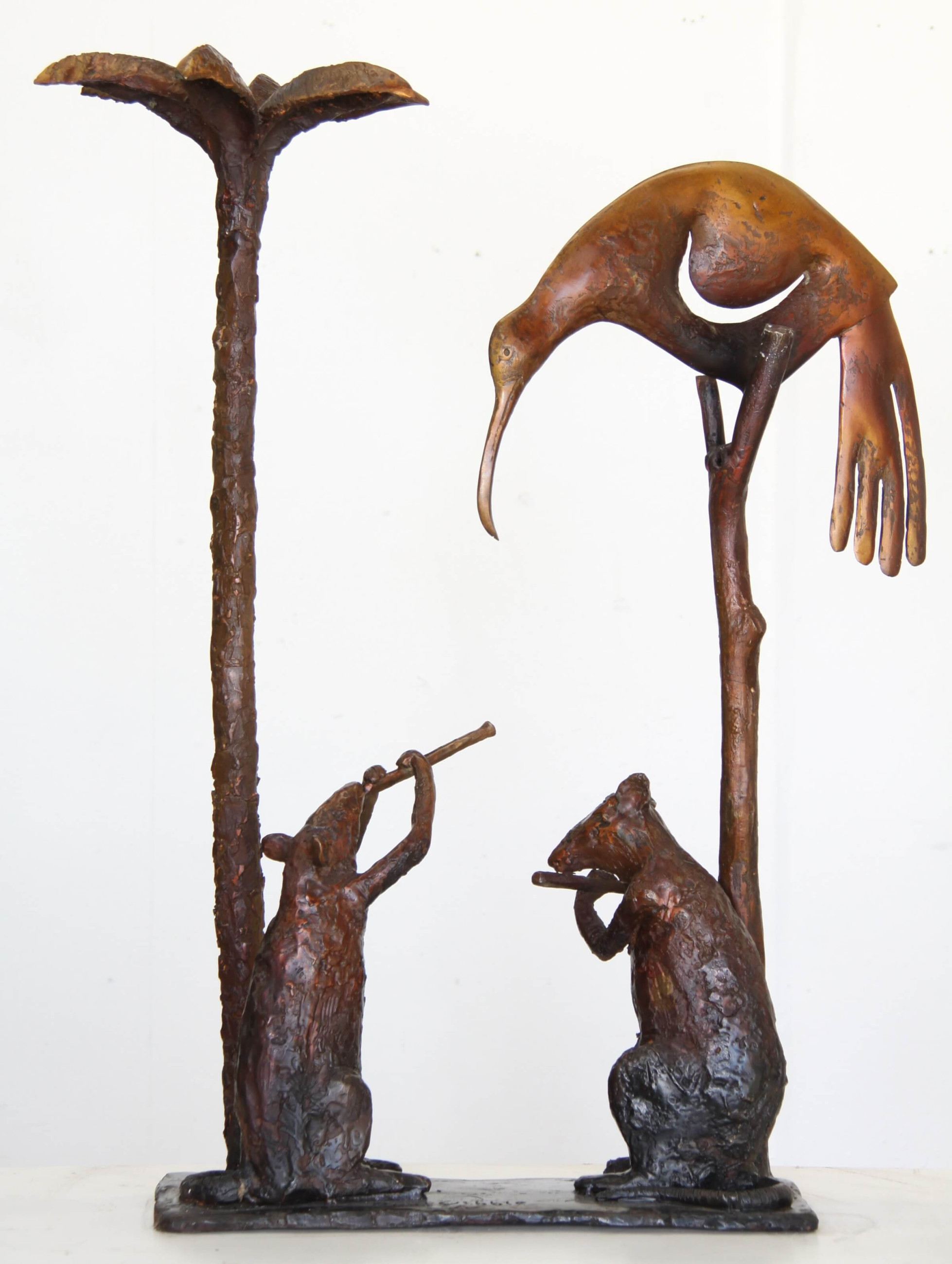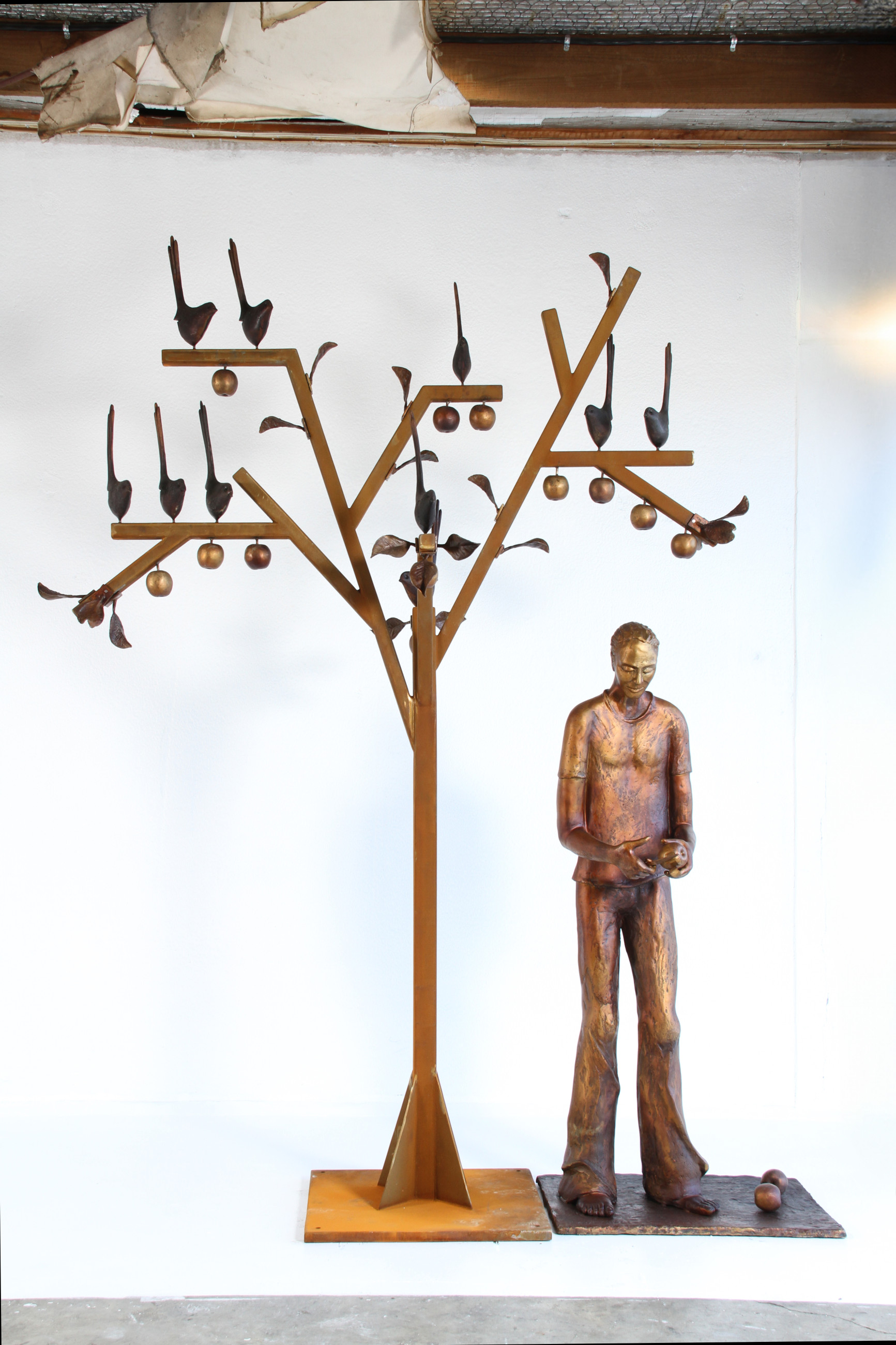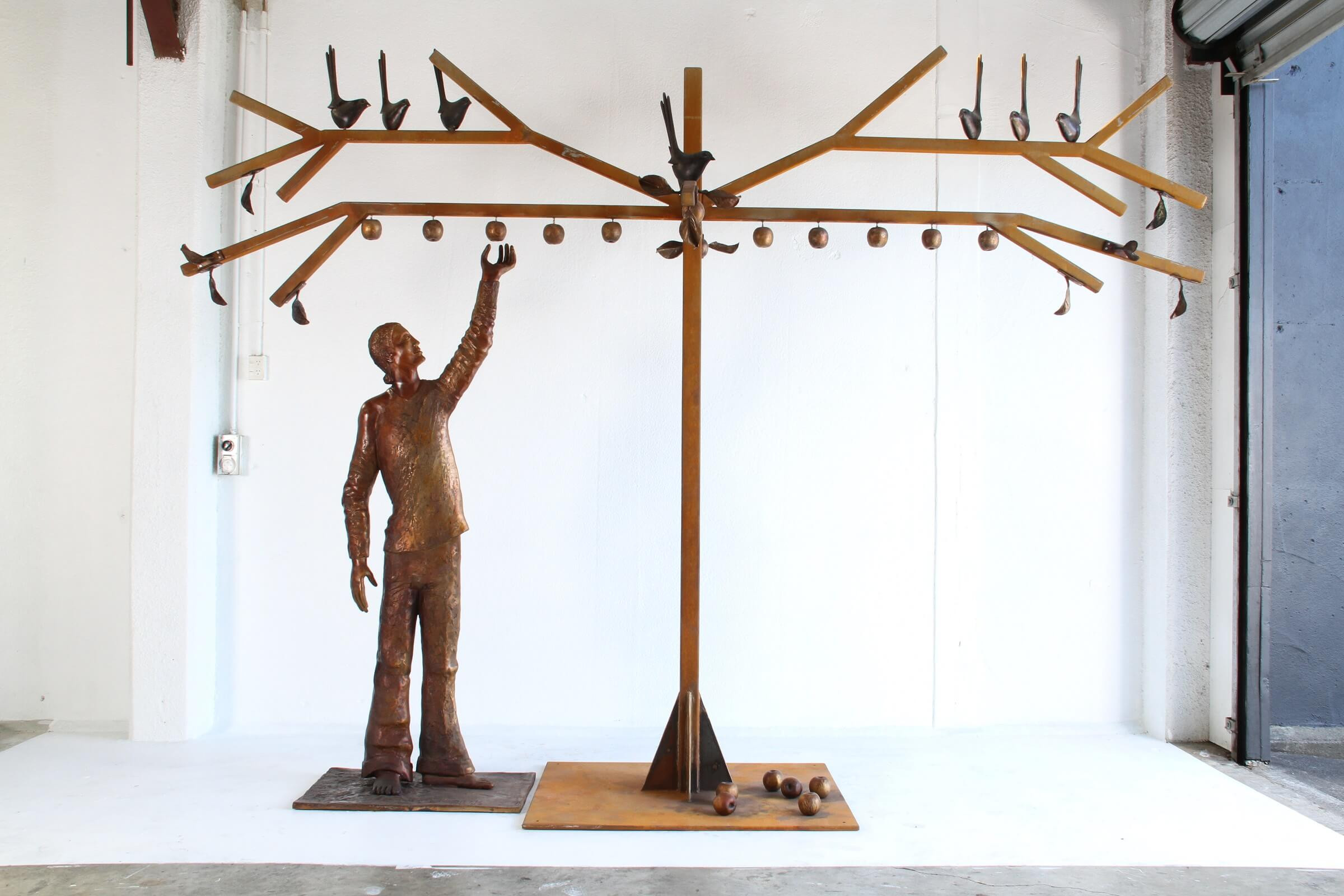October 3 - October 27, 2012 The Ghost of the Huia and The Orchard
October 3 - October 27, 2012 The Ghost of the Huia and The OrchardSolo, Gow Langsford Gallery, Auckland
Text
In his exhibition of new sculptures, The Ghost of the Huia and The Orchard, Paul Dibble extends his amalgamation of Corten steel with cast bronze. In a glorious juxtaposition of function and aesthetic play the two materials demonstrate a fascinating use of contrast. By methods of cutting, measuring and bending the Corten is engineered by the artist into geometric forms and, as in his earlier series’, the precision of the highly fabricated steel is enlivened by the contrast of the rounded and sensual surfaces of the hand-modelled bronze.
The comparison further emphasises variances in colour and finish – the lush matt orange hues of the oxidised Corten surfaces contrasted against the dark brown and golden hues in the bronze patina.
A monumentally sized huia bird is poised elegantly on a geometric circle in Ghost of the Huia, and although more refined than earlier works, it is reminiscent of works in his 2010 exhibition Birds’ Eye View. Its head is slightly cocked to one side as it hovers above the viewers, seemingly seeking to engage with its audience – a concept central to the earlier exhibition. The other large works are thematic departures. Two apple trees are representations of an orchard, an element once essential to the farming homestead and reminiscent of the typical kiwi backyard.
The use of Corten in these works has a lighter touch. The structure of the trees are made up of thin geometric struts and embellished with the lyrical curls of bronze leaves and sensuous apple forms. A group of birds appear to have gathered amongst the branches as if ready to roost at dusk, again seeming to actively watch from above.
The symbolism in these works in pronounced. Beginning with Adam and Eve in Eden, apples are a fruit traditionally imbibed with a great deal of allegorical meaning and are an ultimate symbol of choice. The human presence is, of course, pivotal in these works. Appearing as an apple picker, a young man still with the slenderness of youth and a relaxed stance intentionally appears carefree. He is shown reaching out to pluck an apple from a branch while in another he is depicted under the tree’s branches peeling the fruit. This, and titles such as The Choice combined with the overt symbolism of the apple, encourage metaphors for the unfolding of life, based on one’s choices.
In a grouping of smaller works a selection of apple-pickers are depicted on ladders and stools, each looking for the juiciest piece of fruit. One female figure, naked with a hand barely hiding her figure, can be interpreted as Eve in the Eden orchard. Among the constructed branches one can see the shape of the cross of Calvary.
The exhibition title The Ghost of the Huia and The Orchard, in part, refers to the passing of time and a perceived loss of paradise. If you consider New Zealand as an antipodean heaven, from generation to generation the idea of paradise has changed. The forest habitats of the huia bird, now extinct, were replaced by the orchards where children could play and families make sweet desserts. One idyllic scene replacing another, but with the passage of time both have been lost – and here, remembered.
